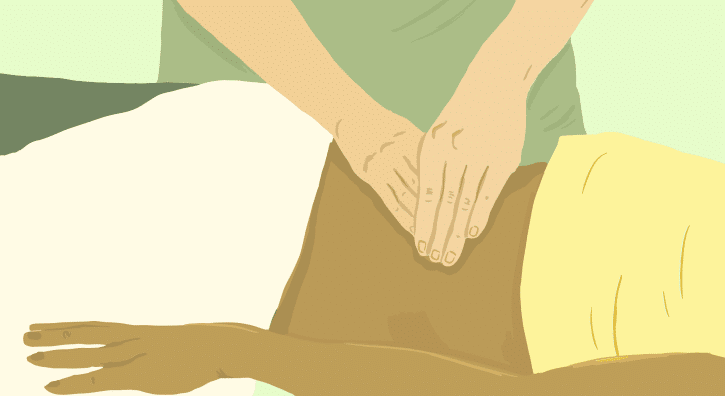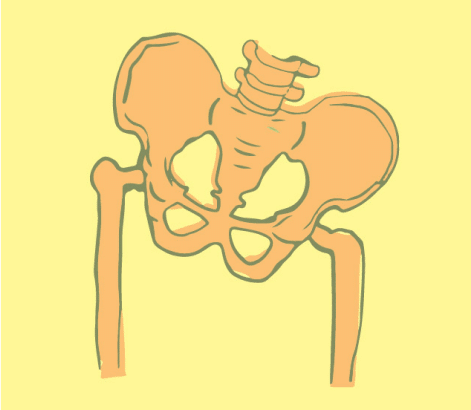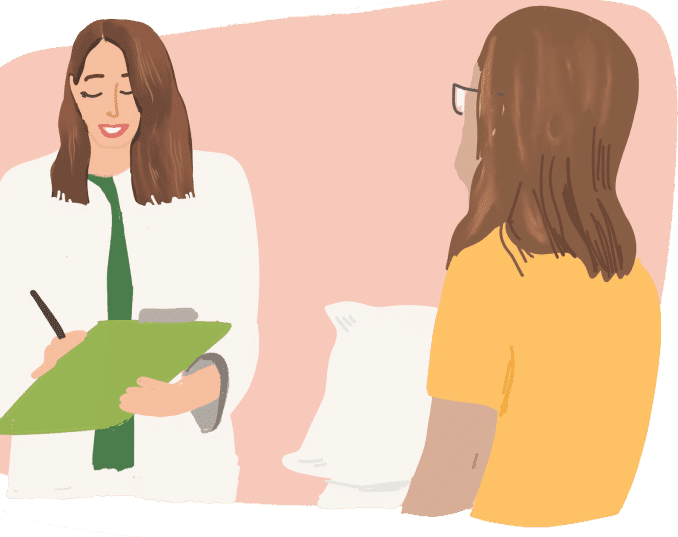

Sexual dysfunction refers to a consistent or recurring problem experienced during any phase of sexual activity—be it desire, arousal, orgasm, or physical discomfort. A key player in this is the pelvic floor muscles, which are closely tied to sexual function. In males, these muscles contribute to sustaining erections, while in all individuals, they perform rapid, rhythmic contractions during orgasm. Under healthy conditions, these muscles enhance sexual pleasure without causing pain. However, when pelvic floor dysfunction occurs, this typical pleasure is often replaced by discomfort or even pain, along with a decline in normal sexual responsiveness. This can be emotionally and physically troubling. Fortunately, pelvic floor physical and occupational therapy offers a clinically effective way to address and improve these issues.
The Facts
- Roughly one in three women who haven’t yet reached menopause will encounter painful intercourse at some stage in her life.
- Between 15% and 72% of men younger than 40 report experiencing some level of erectile dysfunction.
- Among men aged 40 to 70, about 52% are affected by mild to moderate erectile dysfunction.
- As many as 80% of men who undergo a prostatectomy will deal with erectile dysfunction afterward.
- Around 60% of menopausal women do not disclose painful sex to their physicians due to embarrassment.
- Certain medications—including birth control pills and treatments for acne—can lead to vulvar pain and reduce the body’s natural lubrication.
- Additionally, 65% of women still report pain during intercourse up to 18 months following childbirth.
Sexual dysfunction refers to a consistent or recurring problem experienced during any phase of sexual activity—be it desire, arousal, orgasm, or physical discomfort. A key player in this is the pelvic floor muscles, which are closely tied to sexual function. In males, these muscles contribute to sustaining erections, while in all individuals, they perform rapid, rhythmic contractions during orgasm. Under healthy conditions, these muscles enhance sexual pleasure without causing pain. However, when pelvic floor dysfunction occurs, this typical pleasure is often replaced by discomfort or even pain, along with a decline in normal sexual responsiveness. This can be emotionally and physically troubling. Fortunately, pelvic floor physical and occupational therapy offers a clinically effective way to address and improve these issues.
The Facts
- Roughly one in three women who haven’t yet reached menopause will encounter painful intercourse at some stage in her life.
- Between 15% and 72% of men younger than 40 report experiencing some level of erectile dysfunction.
- Among men aged 40 to 70, about 52% are affected by mild to moderate erectile dysfunction.
- As many as 80% of men who undergo a prostatectomy will deal with erectile dysfunction afterward.
- Around 60% of menopausal women do not disclose painful sex to their physicians due to embarrassment.
- Certain medications—including birth control pills and treatments for acne—can lead to vulvar pain and reduce the body’s natural lubrication.
- Additionally, 65% of women still report pain during intercourse up to 18 months following childbirth.
Symptoms
*Sexual Dysfunction in people with a penis
- Erectile dysfunction may present as weak erections, difficulty achieving one, or problems sustaining it; premature ejaculation is also common.
- A noticeable decrease in ejaculatory force or a complete inability to ejaculate can occur.
- Climacturia, or urine leakage during orgasm, may be experienced.
- Pain following ejaculation may affect the penis (tip or shaft), the scrotum, or the perineal region.
- There may also be visible changes in coloration affecting the penis, scrotum, or perineum.
Postpartum Sexual Dysfunction
- Breastfeeding-related dryness or impaired lubrication
- Tenderness in the perineum following episiotomy or birth injury
- Little or no ability to climax
- Urine leakage during either orgasm or sexual activity
- Pain or discomfort during intercourse
*Sexual Dysfunction in people with vulvas/vaginas
- Difficulty or reduced capacity to self-lubricate
- Discomfort during vaginal entry, with deeper penetration, or persistent pain throughout
- Sensitivity or pain in the clitoris, including extreme sensitivity to touch
- Burning or soreness following intimacy
- Challenges reaching orgasm or reduced intensity of orgasmic response
- Leakage of urine during sexual intercourse
- Urinary leakage occurring at the moment of orgasm (climacturia)
Menopausal Sexual Dysfunction and Post-gynecologic cancer treatment
- Reduced natural lubrication
- Challenges or inability to engage in vaginal penetration
- Pain with intercourse—either during or after activity
- Loss of ability to climax or significant decline in orgasm quality
Symptoms
*Sexual Dysfunction in people with a penis
- Erectile dysfunction may present as weak erections, difficulty achieving one, or problems sustaining it; premature ejaculation is also common.
- A noticeable decrease in ejaculatory force or a complete inability to ejaculate can occur.
- Climacturia, or urine leakage during orgasm, may be experienced.
- Pain following ejaculation may affect the penis (tip or shaft), the scrotum, or the perineal region.
- There may also be visible changes in coloration affecting the penis, scrotum, or perineum.
*Sexual Dysfunction in people with vulvas/vaginas
- Difficulty or reduced capacity to self-lubricate
- Discomfort during vaginal entry, with deeper penetration, or persistent pain throughout
- Sensitivity or pain in the clitoris, including extreme sensitivity to touch
- Burning or soreness following intimacy
- Challenges reaching orgasm or reduced intensity of orgasmic response
- Leakage of urine during sexual intercourse
- Urinary leakage occurring at the moment of orgasm (climacturia)
Postpartum Sexual Dysfunction
- Breastfeeding-related dryness or impaired lubrication
- Tenderness in the perineum following episiotomy or birth injury
- Little or no ability to climax
- Urine leakage during either orgasm or sexual activity
- Pain or discomfort during intercourse
Menopausal Sexual Dysfunction and Post-gynecologic cancer treatment
- Reduced natural lubrication
- Challenges or inability to engage in vaginal penetration
- Pain with intercourse—either during or after activity
- Loss of ability to climax or significant decline in orgasm quality
Associated Diagnoses
Diagnoses such as Endometriosis, Vulvodynia, Interstitial Cystitis/Painful Bladder Syndrome, Pudendal Neuralgia, Chronic Pelvic Pain Syndrome/Male Pelvic Pain, Lichen Sclerosus, Lichen Planus, Pelvic Floor Dysfunction, post-prostatectomy complications, and Genitourinary Syndrome of Menopause are all associated with sexual dysfunction and pelvic pain.

Associated Diagnoses
Diagnoses such as Endometriosis, Vulvodynia, Interstitial Cystitis/Painful Bladder Syndrome, Pudendal Neuralgia, Chronic Pelvic Pain Syndrome/Male Pelvic Pain, Lichen Sclerosus, Lichen Planus, Pelvic Floor Dysfunction, post-prostatectomy complications, and Genitourinary Syndrome of Menopause are all associated with sexual dysfunction and pelvic pain.


Causes of Sexual Dysfunction
- Pelvic pain syndromes associated with pelvic floor dysfunction (above)
- Childbirth
- Medications
- Obesity
- Cardiovascular disease
- Menopause
- Jelqing
- Genital mutilation, genital cutting
- Surgically-induced
- Pelvic Floor Reconstruction
- Prostatectomy
- Gender affirming surgery
- Episiotomy
- Vestibulectomy
- Pudendal Nerve Decompression
- Mesh excision
Causes of Sexual Dysfunction
- Pelvic pain syndromes associated with pelvic floor dysfunction (above)
- Childbirth
- Medications
- Obesity
- Cardiovascular disease
- Menopause
- Jelqing
- Genital mutilation, genital cutting
- Surgically-induced
- Pelvic Floor Reconstruction
- Prostatectomy
- Gender affirming surgery
- Episiotomy
- Vestibulectomy
- Pudendal Nerve Decompression
- Mesh excision

Diagnostic Challenges
Recent research indicates that most healthcare professionals feel uneasy when it comes to initiating conversations about sex with their patients. At the same time, many patients also feel uncomfortable bringing up sexual concerns during medical appointments. This communication gap is even more pronounced within the LGBTQ+ community, which continues to face discrimination in healthcare settings—leading to negative outcomes for sexual health. As healthcare providers, we have a responsibility to bridge this gap. At PHRC, we are committed to creating a welcoming environment where every patient feels heard, respected, and cared for in all dimensions of pelvic health. It’s important to recognize that sexual health is now recognized as a legitimate medical field, and there are effective solutions available. Because sexual wellness involves both physical and psychological elements, successful treatment typically requires a collaborative, interdisciplinary approach—combining medical care, behavioral therapy, and pelvic floor physical and occupational therapy.
Diagnostic Challenges
Recent research indicates that most healthcare professionals feel uneasy when it comes to initiating conversations about sex with their patients. At the same time, many patients also feel uncomfortable bringing up sexual concerns during medical appointments. This communication gap is even more pronounced within the LGBTQ+ community, which continues to face discrimination in healthcare settings—leading to negative outcomes for sexual health. As healthcare providers, we have a responsibility to bridge this gap. At PHRC, we are committed to creating a welcoming environment where every patient feels heard, respected, and cared for in all dimensions of pelvic health. It’s important to recognize that sexual health is now recognized as a legitimate medical field, and there are effective solutions available. Because sexual wellness involves both physical and psychological elements, successful treatment typically requires a collaborative, interdisciplinary approach—combining medical care, behavioral therapy, and pelvic floor physical and occupational therapy.
Treatment:
How We Can Help You

If you’re located in Glendale and experiencing any form of sexual dysfunction, it may be time to consider a comprehensive evaluation with a pelvic floor physical and occupational therapist. This assessment helps determine whether your pelvic floor muscles are contributing to your symptoms. During your initial visit, your physical and occupational therapist will go over your full health history, including past diagnoses, previous treatments you’ve tried, and how successful those interventions were. We understand that by the time many patients from Glendale find their way to us, they’re often discouraged or overwhelmed—and we approach each case with compassion and care. The physical exam includes a close evaluation of your muscles, tissues, joints, nerves, and movement patterns. Afterward, your therapist will review the findings with you, explain how your symptoms may have developed, and work with you to set both short- and long-term treatment goals. Most therapy plans involve weekly or biweekly sessions for about 12 weeks, supported by a tailored home exercise program. Your therapist will also coordinate with your broader medical team to ensure the best outcomes. Our goal is to help you regain comfort, confidence, and control—so you can live fully again in Glendale and beyond.

Treatment:
How We Can Help You
If you’re located in Glendale and experiencing any form of sexual dysfunction, it may be time to consider a comprehensive evaluation with a pelvic floor physical and occupational therapist. This assessment helps determine whether your pelvic floor muscles are contributing to your symptoms. During your initial visit, your physical and occupational therapist will go over your full health history, including past diagnoses, previous treatments you’ve tried, and how successful those interventions were. We understand that by the time many patients from Glendale find their way to us, they’re often discouraged or overwhelmed—and we approach each case with compassion and care. The physical exam includes a close evaluation of your muscles, tissues, joints, nerves, and movement patterns. Afterward, your therapist will review the findings with you, explain how your symptoms may have developed, and work with you to set both short- and long-term treatment goals. Most therapy plans involve weekly or biweekly sessions for about 12 weeks, supported by a tailored home exercise program. Your therapist will also coordinate with your broader medical team to ensure the best outcomes. Our goal is to help you regain comfort, confidence, and control—so you can live fully again in Glendale and beyond.
How Can We Help You?
Please use the form below to send us any questions or comments. You must include your e-mail address in order for us to send a response. Please be assured that all of your information will be kept confidential.

Join The Newsletter. Win a copy of our book, “Pelvic Pain Explained!”
We love getting to know our website visitors. Please tell us a little bit about yourself and get the latest info via PHRC e-newsletter!
*Subscribers automatically eligible to win our book, “Pelvic Pain Explained.”
At its core, Pelvic Pain Explained shares the journey of how pelvic pain begins for patients, the struggles they and their healthcare providers encounter during the often-complex diagnosis and treatment journey, the overwhelming task of navigating countless treatment options, and the profound ways this unseen condition can affect daily life, emotional health, and relationships—and so much more.


